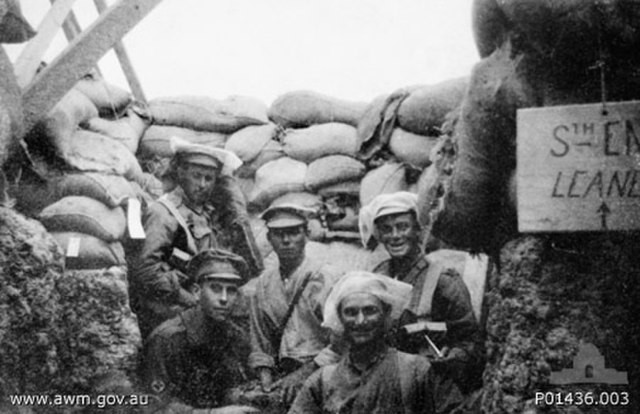John Woods Whittle, VC, DCM was an Australian recipient of the Victoria Cross, the highest decoration for gallantry "in the face of the enemy" that can be awarded to members of the British and British Commonwealth armed forces. Whittle was serving as a sergeant in the First World War when he was decorated with the Victoria Cross following two separate actions against German forces during their retreat to the Hindenburg Line in 1917. In the latter action, he attacked a machine gun crew, killing the group and seizing the gun.
Sergeant John Whittle c.1919
Sergeant J. W. Whittle in France, 1916
The group of ten Australian Victoria Cross recipients repatriated to Australia to assist in recruitment pictured on HMAT Medic with three naval officers. Whittle is in the centre of the back row.
Sergeant John Whittle c. 1918
12th Battalion (Australia)
The 12th Battalion was an infantry battalion originally raised for the First Australian Imperial Force during the First World War. The battalion was recruited from Tasmania, South Australia and Western Australia and formed part of the 3rd Brigade, 1st Division. It served throughout the war, firstly during the Gallipoli Campaign and then on the Western Front. During the interwar years, the 12th Battalion was re-raised as a part-time military unit and during the Second World War undertook garrison duties in Australia, but did not see combat. Today its lineage is perpetuated by the 12th/40th Battalion, Royal Tasmania Regiment, a unit which continues to serve in the Australian Army Reserve.
A 12th Battalion observation team at Gallipoli in August 1915
James Newland, one of the 12th Battalion's two Victoria Cross recipients






